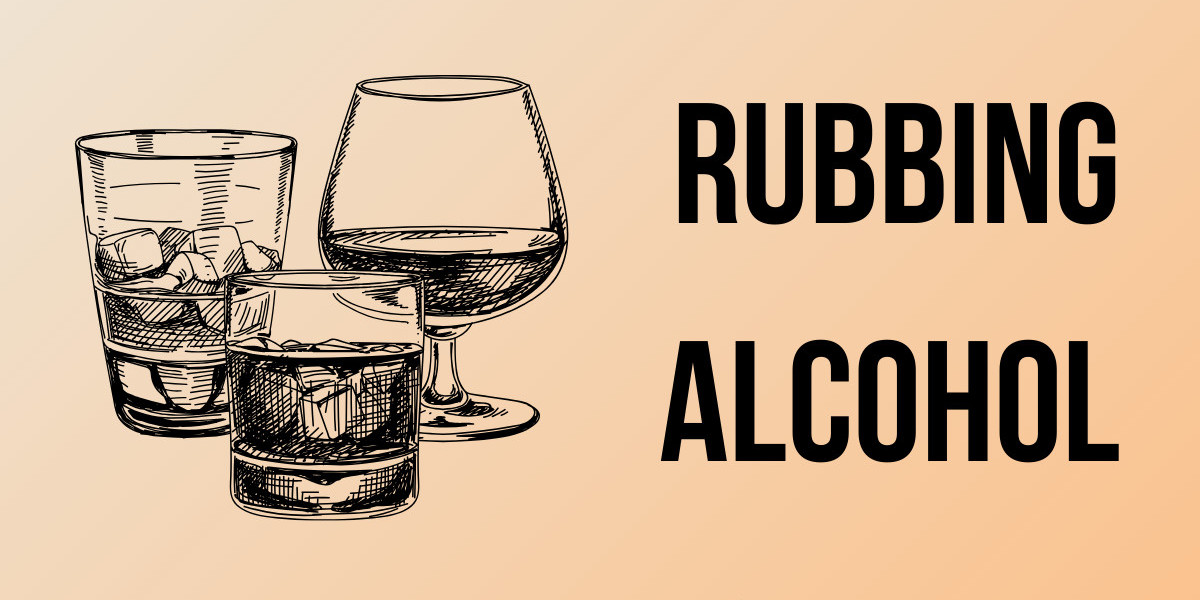Rubbing alcohol is a common household product with a multitude of uses and benefits. This versatile liquid, primarily composed of isopropyl alcohol or ethanol, is essential for maintaining hygiene, cleaning, and even in various medical applications. In this comprehensive guide, we'll explore everything you need to know about rubbing alcohol, from its uses to safety tips and more.
What is Rubbing Alcohol?
Rubbing alcohol is a solution of alcohol and water, commonly used for its antiseptic and disinfectant properties. The term "rubbing alcohol" generally refers to isopropyl alcohol, though ethanol can also be used. Typically, rubbing alcohol contains around 70% alcohol, though concentrations can vary.
The Composition of Rubbing Alcohol
The primary ingredient in rubbing alcohol is either isopropyl alcohol (IPA) or ethanol. Isopropyl alcohol is a colorless, flammable liquid with a strong odor. It is known for its effectiveness in killing bacteria and viruses, making it a popular choice for sanitizing surfaces and disinfecting wounds.
Ethanol, on the other hand, is a type of alcohol found in alcoholic beverages. When used in rubbing alcohol, it has similar antiseptic properties but may be less effective in certain concentrations compared to isopropyl alcohol.
How Rubbing Alcohol Works
Rubbing alcohol works by denaturing proteins in bacteria and viruses, effectively killing them. When applied to a surface or wound, the alcohol disrupts the cell membranes of microorganisms, leading to their destruction. This mechanism makes rubbing alcohol an effective tool for disinfection and sanitization.
Uses of Rubbing Alcohol
Rubbing alcohol has a wide range of uses in both household and medical settings. Here are some of the most common applications:
Disinfecting Surfaces
One of the primary uses of rubbing alcohol is to disinfect surfaces. Whether you’re cleaning countertops, doorknobs, or electronic devices, rubbing alcohol is an effective choice for eliminating germs and bacteria. Simply apply the rubbing alcohol to a clean cloth or spray bottle and wipe down the surfaces. For electronics, it's crucial to use a small amount and avoid getting the alcohol directly into any openings.
Medical Uses
In medical settings, rubbing alcohol is used to clean and sanitize skin before injections or minor surgical procedures. It helps reduce the risk of infection by killing any bacteria present on the skin. Additionally, rubbing alcohol is often used to clean medical equipment and surfaces in hospitals and clinics.
First Aid
Rubbing alcohol is a staple in first aid kits. It can be used to clean minor cuts and scrapes, helping to prevent infection. It’s important to note that rubbing alcohol should be used with caution on open wounds, as it can cause irritation or a burning sensation.
Removing Stains
Rubbing alcohol is also effective at removing stains from various surfaces. It can be used to treat ink stains, adhesive residues, and even some types of mildew. Apply the rubbing alcohol to a clean cloth and gently rub the stained area until the stain is removed.
Deodorizing and Cleaning
Rubbing alcohol can help deodorize and clean various items around the home. It can be used to clean and freshen up items like shoes, carpets, and upholstery. Additionally, rubbing alcohol can be used to clean glass and mirrors, leaving them streak-free.
Benefits of Rubbing Alcohol
The benefits of rubbing alcohol extend beyond its versatility in cleaning and disinfecting. Here are some of the key advantages:
Effective Antiseptic
Rubbing alcohol is highly effective at killing a wide range of bacteria and viruses. This makes it a valuable tool for maintaining hygiene and preventing the spread of illness.
Fast Evaporation
Rubbing alcohol evaporates quickly, leaving no residue behind. This makes it ideal for cleaning electronic devices and other surfaces where residue could be problematic.
Cost-Effective
Compared to many commercial disinfectants and cleaning products, rubbing alcohol is relatively inexpensive. It provides a cost-effective solution for maintaining cleanliness and hygiene.
Multipurpose
Rubbing alcohol’s versatility means that it can be used for various tasks around the home and in medical settings. Its wide range of applications makes it a valuable addition to any household or first aid kit.
Safety Tips for Using Rubbing Alcohol
While rubbing alcohol is a useful and effective product, it's important to use it safely. Here are some essential safety tips:
Avoid Inhalation
Inhaling rubbing alcohol vapors can be harmful to your respiratory system. Always use rubbing alcohol in a well-ventilated area and avoid breathing in the fumes.
Keep Away from Flames
Rubbing alcohol is highly flammable. Keep it away from open flames, heat sources, and sparks to prevent accidental fires.
Store Properly
Store rubbing alcohol in a cool, dry place away from direct sunlight. Keep it out of reach of children and pets to prevent accidental ingestion or exposure.
Use in Moderation
While rubbing alcohol is effective for cleaning and disinfecting, using it excessively can lead to skin irritation or damage to surfaces. Use it sparingly and follow the manufacturer's instructions.
Check for Allergic Reactions
Some individuals may be sensitive or allergic to rubbing alcohol. If you experience any irritation or adverse reactions, discontinue use and seek medical advice.
Common Misconceptions About Rubbing Alcohol
There are several misconceptions about rubbing alcohol that can lead to misunderstandings about its uses and safety. Here are a few common myths:
Rubbing Alcohol is the Same as Drinking Alcohol
Rubbing alcohol and drinking alcohol (ethanol) are not the same. Rubbing alcohol is intended for external use only and can be toxic if ingested. Drinking alcohol, on the other hand, is consumed in moderation for recreational purposes.
Higher Concentrations are Always Better
While higher concentrations of rubbing alcohol can be more effective at killing bacteria and viruses, they can also be more irritating to the skin. For general cleaning and disinfecting, a concentration of around 70% is usually sufficient.
Rubbing Alcohol is Safe for All Surfaces
Not all surfaces are suitable for rubbing alcohol. It can damage certain materials, such as acrylic, and should be used with caution on delicate surfaces. Always test a small, inconspicuous area first.
Alternatives to Rubbing Alcohol
While rubbing alcohol is a versatile and effective product, there are several alternatives that can be used for similar purposes:
Hydrogen Peroxide
Hydrogen peroxide is another common disinfectant with antiseptic properties. It can be used to clean wounds and disinfect surfaces. However, it may not be as effective at killing certain types of bacteria compared to rubbing alcohol.
Bleach
Bleach is a powerful disinfectant and can be used to clean and sanitize surfaces. It is highly effective at killing germs and viruses but should be used with caution due to its strong fumes and potential for causing skin irritation.
Vinegar
Vinegar is a natural disinfectant and can be used to clean various surfaces. It is less potent than rubbing alcohol but can be effective for general cleaning tasks.
Antiseptic Wipes
Antiseptic wipes are convenient for on-the-go disinfecting and can be used to clean hands and surfaces. They often contain rubbing alcohol or other antiseptic agents.
Conclusion
Rubbing alcohol is a valuable tool with a wide range of uses, from disinfecting surfaces to first aid and beyond. Its effectiveness, versatility, and cost-effectiveness make it a staple in many households and medical settings. By following safety guidelines and using rubbing alcohol appropriately, you can harness its benefits while minimizing any potential risks.
Whether you're cleaning your home, maintaining hygiene, or handling minor injuries, rubbing alcohol is an essential product to keep on hand. Remember to use it responsibly and explore alternative products when needed to ensure a safe and clean environment.






